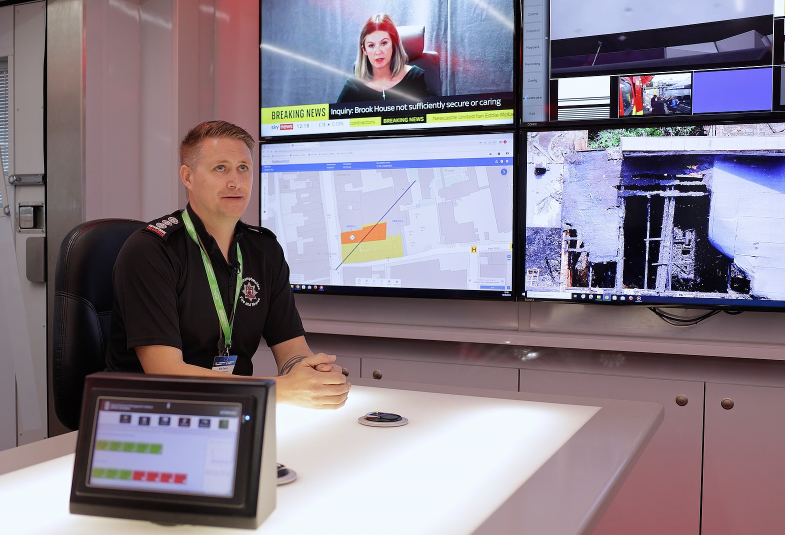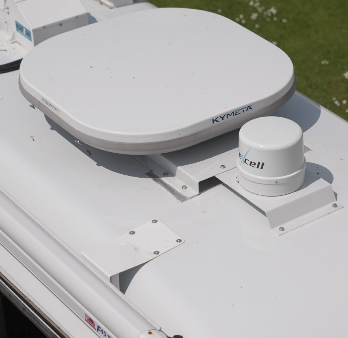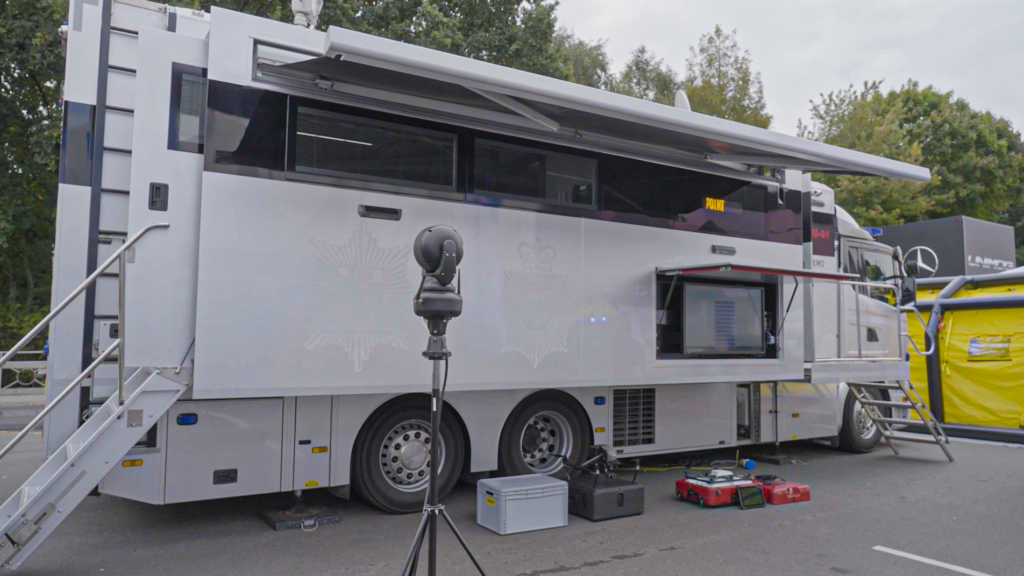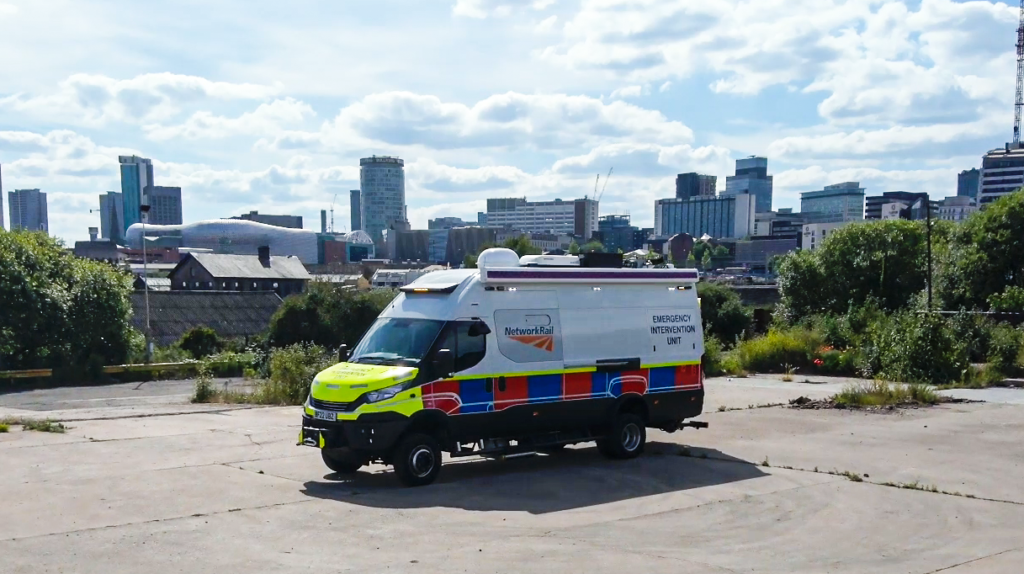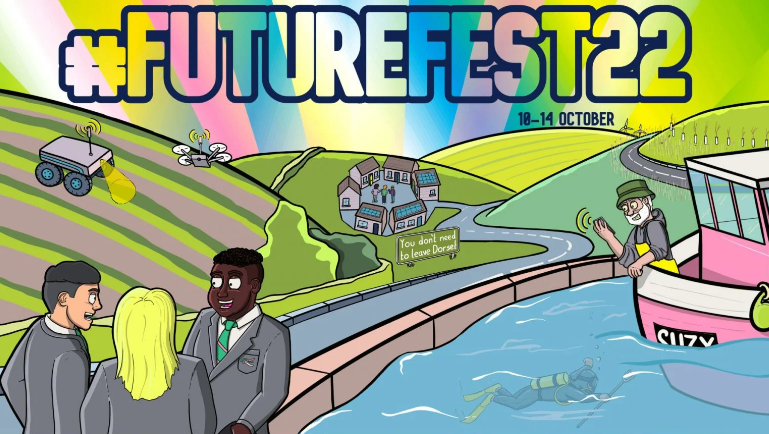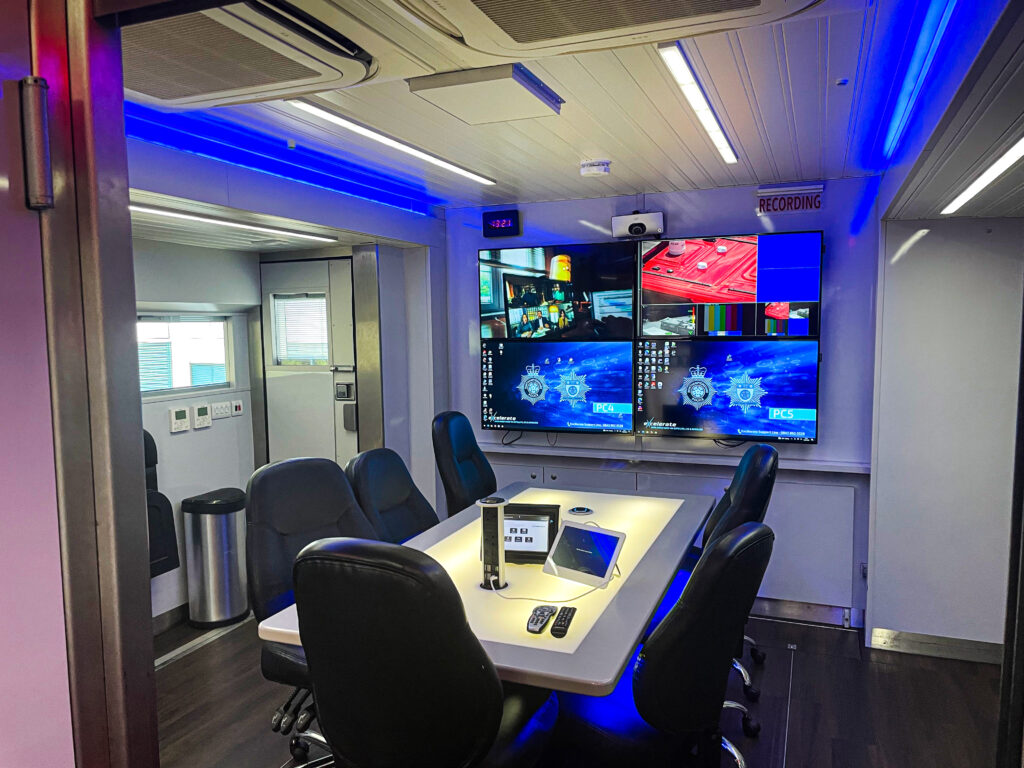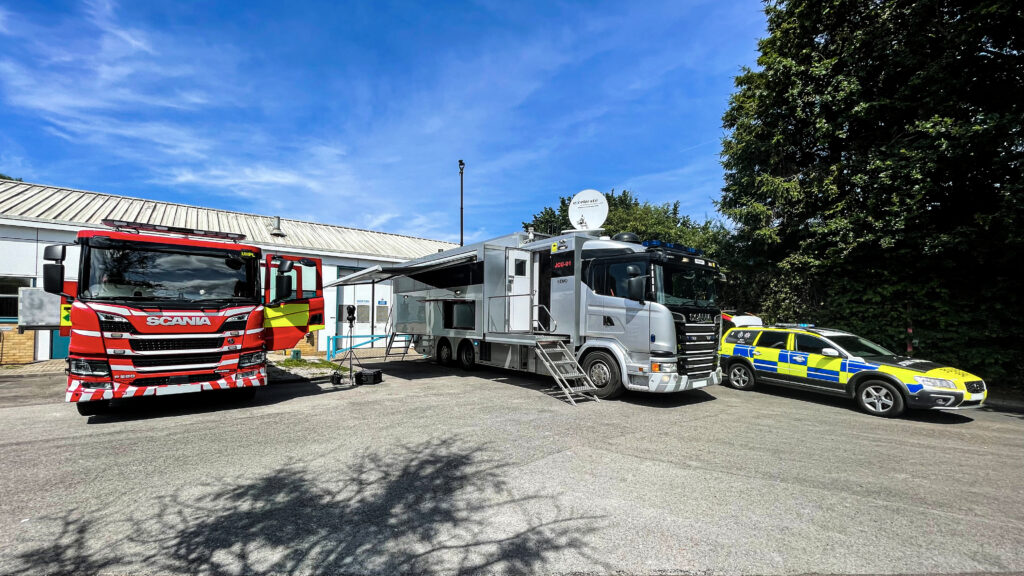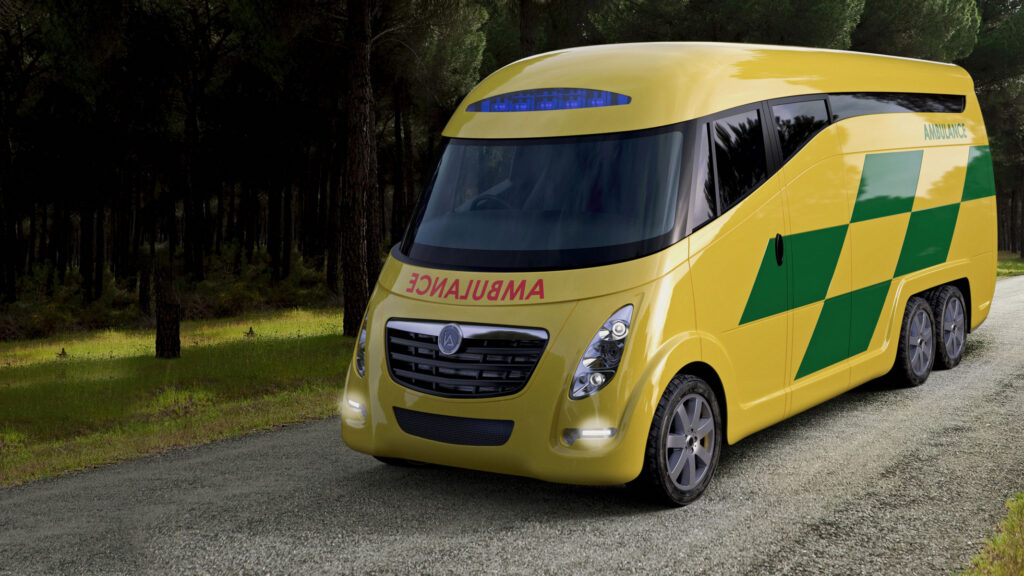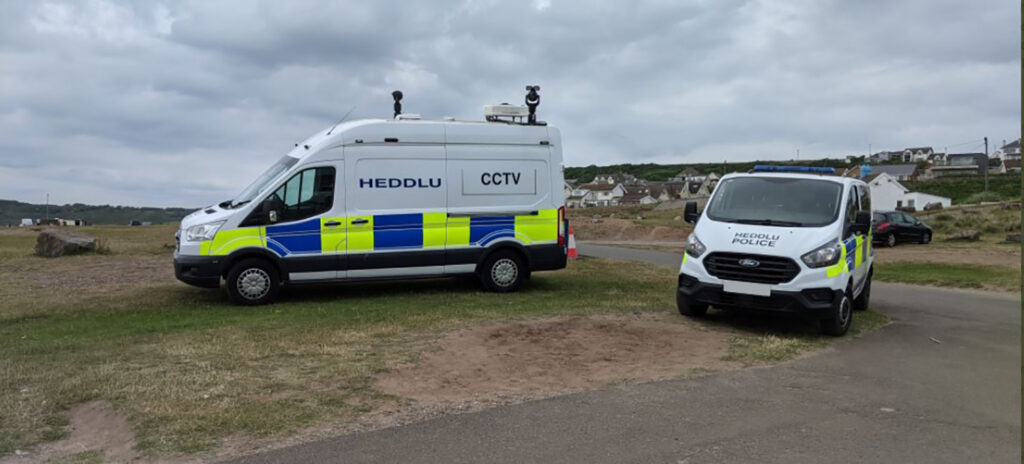A Benchmark for the National Ambulance Service: Investing in Resilience
Emergency Services Times interview with David Savage, C.E.O, Excelerate Technology and Steve Wheaton, Assistant Chief Ambulance Officer, West Midlands Ambulance Service.
West Midlands Ambulance Service (WMAS) has launched a new bespoke Incident Command Unit (ICU) with the latest technology to deal with major and prolonged incidents. With technology integration and satellite services provided by Excelerate, this ICU will provide a communications hub and base for the ambulance service’s commanders at the scene for the duration of an incident and to accommodate multi-agency responses where required. With the vehicle now in service and ready to be deployed, Emergency Services Times spoke to Steve Wheaton, Assistant Chief Ambulance Officer, West Midlands Ambulance Service; and David Savage, Chief Executive, Excelerate.
Emergency Services Times (EST): Can you tell us a bit more about how this project came about? How has the Government’s desire for greater cooperation between our emergency services influenced the specification of the ICU?
Steve Wheaton (SW): The Ambulance Trust’s existing control vehicle was due for replacement and we evaluated what worked well on it as well as identifying areas that could be improved. Technology had moved on considerably and the original vehicle wasn’t big enough to let commanders actually focus on the task in hand, free from distractions that occur when large and complex incidents begin to develop.
The original vehicle had very limited space to hold formal review meetings on how the incident and its management were progressing. We decided that by building a larger vehicle we could actually ensure that all key partners involved with the incident could essentially ‘have a seat at the table’, with up-to-date, reliable information to hand, which brings greater cooperation.
David Savage (DS): We see a continued trend towards collaborative working and the sharing of information and resources between services. We are working with other emergency services customers on installations similar to the WMAS incident command vehicle, as well as on solutions in other formats that will accommodate multi-agency responses utilising the very latest technology.

EST: In what ways is the vehicle an ‘HQ on wheels’?
SW: WMAS has always been at the forefront of advancing its technological capabilities. All of our plans and data are securely stored ‘in the cloud’. By connecting to the internet from the two source options available, we can instantaneously access those plans, their action cards, our own e-mail accounts, the Computer Aided Dispatch (CAD) system and all other back office functions. This advanced functionality replaces the need for commanders to carry large paper- based files and means everyone has access to the latest plans. With the addition of Trust WiFi on the vehicle it also ensures that all devices currently registered onto the network have instant access without the need for long and complicated log on processes.
DS: Effectively, the ICU takes all the functionality of a fixed base HQ out to the incident ground and enables the command structure to operate remotely. On-board, a fully equipped conference room – with seating for up to nine people – provides a collaborative and networked environment for WMAS commanders, alongside those of cooperating services, to manage incidents in real time, drawing upon an array of data feeds, voice communications and video streams direct from the incident. With a separate area for housing two operatives, data from Trust HQ systems or information from IP-based applications may be accessed to support decision-making.
EST: How does this resource enhance your ability to make good tactical decisions and protect staff?
SW: From a JESIP point of view it means we can work to the underpinning principles of best practice laid out in the doctrine. We can co-locate, communicate, coordinate, jointly understand risk and therefore share situational awareness. The technology feeds coming into the vehicle give commanders an excellent overview of the incident in its entirety, theoretically without the need to ever leave the vehicle. With up-to-date information at their fingertips in a comfortable and secure environment, commanders can ensure all our staff and patients remain the focus of all decision- making and their safety can be monitored.
The vehicle is equipped with video and audible recording equipment, which means we can broadcast images and feeds from the scene. Briefings and meetings can also be recorded for either onward transmission or for recording events as they happened, creating live incident logs and capturing actions. The play back will also help commanders review decisions and assist greatly with post event debriefs and training.
DS: The integrated technology provides WMAS staff and other collaborating agencies with the ability to receive and transmit a range of data, video and voice communications in real time, which provides shared situational awareness. This leads to more informed decision-making, helps to keep staff safe and enables teams to provide the best possible response.
ST: How does the on-board technology enable WMAS to do this?
DS: The on-board cameras can be deployed immediately upon arrival at an incident to enable high quality real-time video to be streamed back to where it is needed. For example, a roof-mounted camera on a telescopic 5m mast allows extended height for the surveillance of wide areas. The ICU is equipped with a Sherpa unit – Excelerate’s automatic pole/lamp-post climbing solution. This is used to extend the vehicle’s CCTV reach further by deploying an optical IR camera incorporating COFDM technology, enabling real time video sharing in mobile and non line-of-sight urban environments. The ICU also has the capability to share video streamed from body worn cameras used by Hazardous Area Response Teams (HART).

These various camera feeds, screen switching, and control of the on-board systems can all be operated from a single, easy-to-use interface – our DDMI (Digital Dashboard Management Interface). Simple operation is key – and the DDMI allows non-technical users to efficiently control, monitor and analyse every aspect of the incident from one place.
The technology feeds coming into the vehicle give commanders an excellent overview of the incident in its entirety, theoretically without the need to ever leave the vehicle
EST: How has the technology been ‘future-proofed’?
DS: As with all the ICU integrations we undertake, we have approached this project collaboratively with WMAS on a ‘whole lifecycle’ basis, looking at both current and expected future needs. This sets the scene and plans for the current and future functionality required – whether it’s the necessary software upgrades or the integration of new generation technologies or the addition of new assets at some point in the future, eg cameras and UAVs.
This process, along with the close support relationship we have with WMAS, delivers the best available functionality with minimum disruption and supports WMAS in maximising their return on investment.
EST: How do the on-board communications systems support WMAS resilience?
DS: With their ICU, WMAS can benefit from an ‘always on’ communications infrastructure, which supports all the required data, video and voice applications wherever and whenever needed. The ICU deploys an independent, private and secure communications network operating over multiple communications bearers – 3G, 4G and Excelerate’s Enhanced Resilience Satellite Network – to provide the highest possible resilience when environmental and other conditions are known to interfere with terrestrial networks.
The ICU is therefore ready to respond to a wide range of incidents across a diversity of terrains and geographies – from urban and metropolitan areas to predominantly rural areas where terrestrial networks might not exist, are unreliable or need extra resilience.
EST: What kind of incidents do you anticipate the vehicle being deployed to?
SW: While technologically advanced, the vehicle design is relatively simple. This means the vehicle is easily deployable for not just major incidents but for incidents where the ambulance service may have to be in attendance for protracted periods. Flooding is a really good example of this, along with incidents such as building collapses where staff and commanders may be required to work long hours in difficult conditions. The bility for the incident to be coordinated from an onsite vehicle, enabling core operations to continue, is absolutely key.
DS: The ICUs we have equipped for our emergency services customers have typically been used at serious incidents where there is significant risk to property and/or life. Additionally we might see them used at major public events or at long and protracted incidents, such as wide area flooding.
EST: How do you see the future of emergency response?
SW: The UK has developed its response to incidents really well over the last decade. Much has been done to enhance the skills of all agencies required to deliver at the front line. This has required large elements of development within single agencies; Hazardous Area Response Teams (HART) are a fantastic example within ambulance services. The challenge now is to bring greater understanding of each other’s capabilities across all agencies while acknowledging the current financial constraints we all face. By doing so – and through the smart use of technology – we can not only make financial savings, but we can ensure we build on successful programmes such as JESIP that bring all emergency services together seamlessly in times of challenge.
DS: With continued convergence across the emergency services, and from a technology point of view, we envisage more opportunity for innovative applications, especially in communications to support improved interoperability and collaborative working. As technology providers we remain in close dialogue with our customers so we can understand in detail their future strategic and operational needs.
Ahead of the Emergency Services Mobile Communications (ESMCP) programme, our in-house team has been focusing on next generation LTE (4G) technology for some time. We have developed this into a tried and tested solution (RapidNet LTE), which enables a private LTE based data network to be instantly deployed at incidents where no terrestrial infrastructure is available, enabling access to data, video and voice applications via smartphones, tablets and other mobile devices. Our RapidNet LTE solution is completely flexible and we are integrating it into mobile (vehicle- based), fixed or portable formats depending on user requirements.



